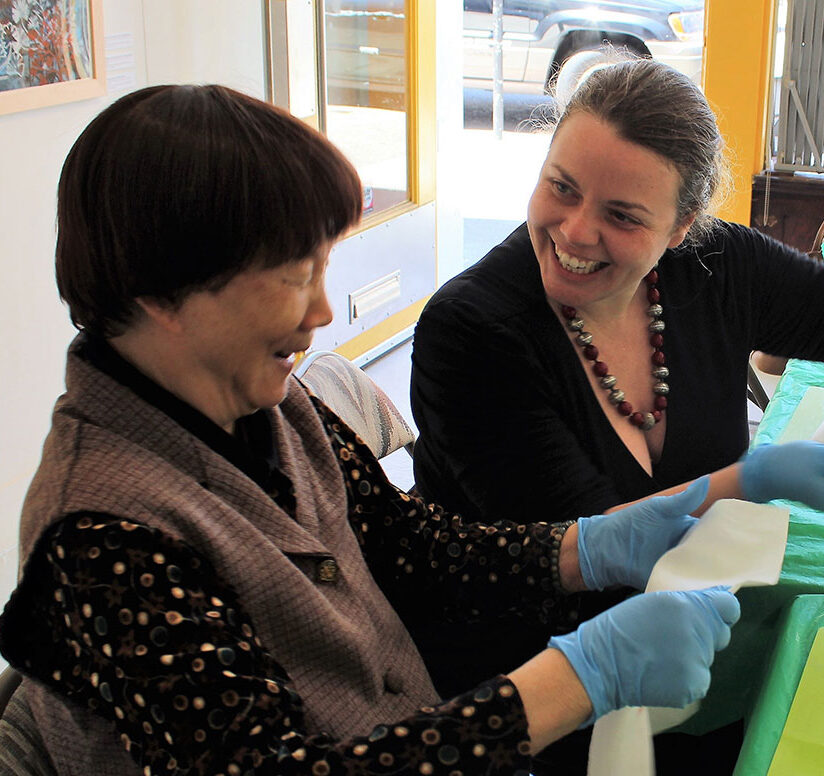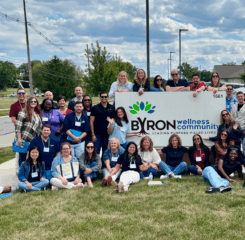This member is setting aside affordable apartments to serve older adults experiencing homelessness, and partnering to bring case management and wraparound services to the new residents.
Responding to growing numbers of homeless older adults, HumanGood, a California-based provider operating life plan and affordable housing communities in six states, is providing affordable housing for older adults currently or formerly experiencing homelessness. HumanGood’s Welcome Home initiative sets aside a percentage of affordable apartments by implementing an owner-adopted admissions preference for individuals experiencing homelessness, in keeping with Department of Housing and Urban Development (HUD) guidelines.
According to Linda Coleman, HumanGood’s vice president of resident services, the organization started by setting aside 6.5% of its affordable units, but wants to increase the percentage of units set aside to 10%, 15%, or possibly more in some locations.
HUD offers a “voluntary preference” for subsidized housing owners, which allows them to set aside a certain number of apartments for homeless or formerly homeless people. When any set-aside unit is unoccupied, eligible applicants jump to the front of the waiting list and can move in. Tameka Brown, HumanGood’s program manager, homeless services, says candidates must be 62 or older and must meet one of four criteria: be living somewhere uninhabitable; be about to lose their shelter within 14 days; be fleeing a situation of domestic violence; or be taking care of a minor who is also homeless.
HumanGood’s expansion of the program started with discussion in community meetings in 2019. Representatives from LeadingAge California, organizations that served people experiencing homelessness, faith-based organizations, and political leaders, met to discuss the crisis of homelessness and how housing providers like HumanGood could partner with nonprofits serving the homeless community. “These meetings not only brought us together, but also educated us on the crisis, because some of us just had no idea of the root causes of homelessness,” Coleman says.
HumanGood secured HUD approval in early 2022, and by October had begun to move eligible older adults into apartments in 16 communities–10 in California and six in the Philadelphia area. Today, says Coleman, at least 32 formerly homeless older adults have been successfully settled in those communities. Those sites are buildings built under HUD’s Section 202 Supportive Housing for the Elderly program, or Section 8 Project-Based Rental Assistance buildings.
A second phase of move-ins is planned this year for 12 more communities–11 in California and one in Philadelphia. Most of the former are in Northern California.
Partnership Is a Necessity
Both Brown and Coleman note that making a program like this work requires partnerships, both for referrals and for follow-up services once the residents have moved in. However, the referral agencies usually don’t provide the follow-up services, says Brown.
“And if you don’t set up a case management [partnership],” Brown adds, “you are just setting people up to fail. You have to have constant support.”
For that, HumanGood will turn to an agency such as SCAN Independence at Home, a subsidiary of SCAN Health Plan and just one of a group of service providers HumanGood partners with where Welcome Home is being implemented. Coleman says HumanGood has built a strong relationship with SCAN, and praises its willingness to go the extra mile in supporting the new residents.
“When we’re looking for a service provider, my first question is to what extent can you provide case management support? I want them to be all-in with us, especially in the first six to nine months,” says Coleman. “You have somebody who might have been living in their car, in a motel, whatever the case may be. On the front end they need 100% support, and it’s a big, big deal to really acclimate people, and then to make them comfortable.”
Coleman says there have been a couple of resident infractions that could have become lease violations, and SCAN Independence at Home staff stepped in immediately, giving HumanGood staff their cell numbers and offering help at any hour of the day.
Finding funds to enable a program like Welcome Home is always a challenge, and building new housing can involve a combination of low-income housing tax credits, foundation funds, city or county funds, capital magnet funds, and more. “The federal disinvestment in affordable housing is a major problem,” says Coleman. “The Feds took away a lot of the funding for affordable housing back in the 1980s, and since then, there has been a huge spike in homelessness. So, I think we [should be] working with the federal government, not just mayors and governors, and pushing for more Section 8 vouchers.”
For more on HumanGood’s Welcome Home initiative, see Tameka Brown’s video presentation on the Welcome Home program, and this article about the launch of the program.
Photo: Morris Lester, a veteran who lacked consistent housing for four years, was the first resident to move into a HumanGood community through the Welcome Home program. He lives in Mountain Vistas I, an affordable housing community in Redding, CA. Photo courtesy of HumanGood.

 Shutdown Week Three: Impact of Ongoing Closure on Affordable Housing
Shutdown Week Three: Impact of Ongoing Closure on Affordable Housing Colleagues on the Move, November 12, 2025
Colleagues on the Move, November 12, 2025


